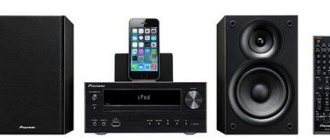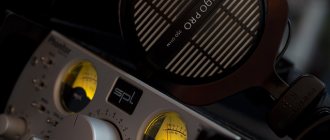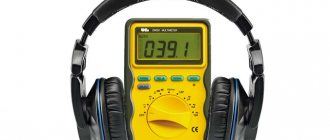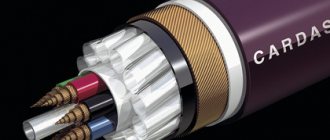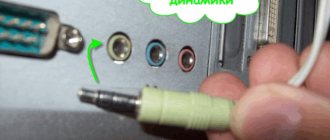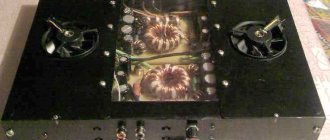External USB DAC (DAC) PEGASUS II HP
Hello everyone and happy holidays. Today I want to talk about my recent acquisition, an external USB DAC PEGASUS II HP. The thing, of course, is not to say that it is cheap, but for me, it is definitely worth the money. For details please see cat. What is a DAC (DAC)
From Wikipedia:
Digital-to-analog converter (DAC) is an electronic device for converting a digital signal into an analog one.
In simple words, a device with which you can output sound from a computer to an amplifier and from it to headphones or speakers, roughly speaking, a sound card that has only an audio output.
It all started when I was given a Sennheiser HD 650 + μDAC-2 DAC to listen to. All the music that I used to listen to has acquired a completely different color; now you can hear every instrument in the musical mixture. I was especially amazed when you listen to a recording of a symphony orchestra, you can close your eyes and imagine being in a concert hall and a live orchestra playing in front of you, you can hear which instrument is located and where. After all this, I no longer wanted to listen to music through bad headphones and a built-in sound card. First of all, I bought discontinued AKG K240Studio headphones on ebay. Why them? Yes, everything is simple, I liked them, and they are very affordable.
To select a DAC, I decided to conduct a mini-test. I collected everything I had from my friends and we all began to compare together:
In the photo from top to bottom: - DAC NU FORCE ICON UDAC 2 (24 bit/96 kHz); — the first version of Pegasus without a headphone amplifier (24 bit/96 kHz); — audio-gd NFB-15.32 (24bit / 192 kHz); — a home-made headphone amplifier, working in tandem with Pegasus.
If you're interested, here's a photo of the insides of the first Pegasus and headphone amplifier
Pegasus:
Amplifier:
In general, the majority found the sound of the Pegasus + amplifier to be the most pleasant.
After weighing everything, plus a break in the forums, I decided to order PEGASUS II HP (version with headphone amplifier). Moreover, the manufacturer claims:
The DAC implements the original principle of flow control via USB, so no relocation is required and the flow exactly matches what is read from the file. Now it is not the computer that determines at what speed to transmit the audio data stream, but the controller in the DAC in exact accordance with its own clock generator. In addition, some improvements have been implemented in the analog path, and a more advanced DAC chip, AD1852, has been used. All these measures provide a significant increase in sound quality compared to previous Pegasi.
Technical description of PEGASUS II:
an original implementation of a USB audio interface that allows you to accurately link the audio stream to a real DAC generator. This solution ensures the most accurate data transmission, and, as a result, high sound quality; support for 24-bit audio with sampling rates up to 96 kHz; powered by 220 V AC mains, does not require additional adapters and converters; The DAC itself is manufactured by Analog Devices – AD1852; bipolar power supply of the output stage allows you to reproduce very low frequencies, down to a constant component; the output amplifier AD 8066 is used in the output stage; high quality passive components: resistors with tolerance less than 0.5%; high quality polypropylene capacitors WIMA and Vishay
Review of this DAC in the magazine “SOUNDMANIA” (No. 17 May 2013)
I wrote to the seller, paid through the contact payment system and somewhere after 10 days the treasured parcel sent from Ukraine was waiting for me in the mail.
Having unpacked the parcel I found:
- PEGASUS II HP DAC itself; — USB cable; - power cable;
When connected to a computer, the system itself identifies the device as Pegasus-2N, so there is no need to download anything additional.
The device has the following characteristics:
— Supply voltage ~230V (or 115V by prior arrangement) — AC frequency 50/60Hz — Power consumption, no more than (linear) 4 W — Power consumption, no more than (HP) 10 W — Supply voltage tolerance ±10% — Output swing line output voltage 9V - Data format 24 bits, stereo - Supported sampling rates 44.1K/48K/88.2K/96K - Dynamic range 112dB - Permissible headphone impedance (HP) 22Ω÷ 600Ω - Dimensions, W/H/D, mm( linear version) 160/45/102 — Weight, g (linear version) 740 — Dimensions, W/H/D, mm (HP version) 160/45/201 — Weight, g (HP version) 1400.
The front panel contains a switch, power indicator, flow rate indicator and a headphone jack. Unfortunately, all the indications are not labeled, so its purpose becomes clear during use.
At the back there is a connector for connecting the power cable, USB cable and line output.
Well, here's the view from below:
And from above:
Now about the software part: Since Pegasus has standard drivers, you can safely listen through your usual players, but of course the indicator on it will immediately warn you about the minimum flow rate.
To get the most out of it, music lovers recommend the foobar2000 player. I downloaded it, installed it, but using it after WinAmp or Aimp is very uncomfortable for me, as if everything is wrong. Later, in one article I found a link to an excellent assembly of Foobar2000 zPack. I myself am somewhat distrustful of assemblies, but it is really very convenient.
People also actively recommend listening through the ASIO driver, which allows you to direct the stream bypassing the Windows mixer, so no left sounds will interfere with enjoying your favorite music.
After playing a little, I became interested in how much the flow rate indication shows the correct information, for this I turned on the resampler plugin and forcibly changing the flow rate to the declared 44.1K/48K/88.2K/96K I saw the corresponding indicator light up. In the photo the 44.1K flow indicator is lit
and now it’s 96K.
Well, what about without the insides:
Result: + decent sound quality corresponding to its price category; + standard drivers that do not require unnecessary movements; + even when the DAC’s power is turned off, it does not turn off as a USB device, so nothing in Windows will fall off or hang; — the indicators are not signed (of course I quickly got used to it, but it would still be better with it);
In general, I am completely satisfied with my purchase, unfortunately, I don’t know how to find words to describe the nature of the sound, but somewhere, before the purchase, I read that with Pegasus you can immerse yourself in your favorite music and listen for hours without headaches, this is true, before me it was enough for an hour maximum, now I can no longer imagine sitting at the computer without the “warm” Pegasus sound.
Ps I wanted to give numbers, since the entire review is purely subjective and the fact that I liked the sound does not mean that you might like it too, but I have neither the experience nor the necessary equipment to take accurate readings. Everything I was able to measure only confirmed that the built-in sound card distorts the sound obscenely.
My crooked ones
I don’t know how DACs are tested correctly, so I’ll give my guesses, and if anyone knows, I’ll be glad for advice. Pegasus - sample No. 1 Built-in sound card - sample No. 2. First of all, I took a pink noise signal in high quality and fed it to No. 1 and No. 2, using a PicoScope 4227 USB oscilloscope, I picked up the signal from the outputs and this is what came out:
No. 1 - signal spectrum
No. 2 - signal spectrum
Then I did the same thing, only with white noise: No. 1 - signal spectrum
No. 2 - signal spectrum
Then, using a generator program, I generated a 1 kHz sine wave and applied it to both samples in the same way. No. 1 - the signal itself
No. 1 - spectrum
No. 2 - the signal itself
No. 2 - spectrum
And it seemed like nothing, but then I gave a sawtooth signal: No. 1 - the signal itself
No. 1 - spectrum
No. 2 - the signal itself
No. 2 - spectrum
Useful links: — discussion of pegasus II on the manufacturer’s website; — Pegasus II user manual; - the site of one of the best, and maybe even the best DAC expert in Russia, Dmitry Andronnikov. You can find a lot of interesting information; — www.lastfm.ru — you register, install their plugin, the site collects statistics on your favorite compositions and creates recommendations on what else you can listen to. - a good audio test and one more. I was especially pleased with this sound (listen only with headphones)
…
That's all, thanks for your attention.
Musical PEGASUS 32Bit/1536kHz 24Bit R2R DAC 6BIT DSD Balanced Impedance
Pegasus has its own zoom feature inside that supports up to 16x.
The combustion time of PEGASUS DACs is one week: standby or powered 24/7 (300 hours), you will get better performance after enough hours.
Connecting RCA or XLR at the same time is not recommended, it will degrade the sound quality because they are separated. Even if the downstream equipment is turned on/off, the output signal will still be passed to the input stage of the downstream device. If possible, use the XLR output.
As a balanced DAC, the XLR output of PEGASUS will be more superior. Music PEGASUS 32Bit/1536kHz 24Bit R2R+6BIT DSD balanced impedance DAC support DSD1024 SPDIF receiving circuit
Test review from the famous reverberator and founder of Soundnes - Sandu Vitalie
Youtube://youtu.be/IX6A2MCXc3oArticle://soundnews.net/sources/dacs/musician-audio-pegasus-r2r-dac-review/
Article: //soundex.ru/en/obzory/sources-obzory/musician-pegasus/
Specifications
Proprietary R2R + DSD architecture
True balanced 24BIT R2R + 6BIT DSD (32 steps FIR filters)
Low noise power supply
FIFO buffer
Digital signal processing via FPGA
DSD1024, PCM1536 supports USB and I2S input (audio source must be compatible with native interface)
Proprietary USB audio solution via STM32F446 advanced AMR based MCU
Licensed Thesycon USB Driver for Windows Platform
Driverless on Mac and Linux
DSD
DSD64-DoP on all inputs
DSD1024 on USB and I2S input
PCM
24bit/44.1, 48, 88.2, 96, 176.4, 192 kHz on all inputs
1536 kHz on USB and I2S input
Sampling mode : Non-Oversampling NOS / Oversampling OS
Digital input
Coaxial * 1 via RCA
Optical * 1 USB * 1 AES/EBU x 1
I2S over HDMI LVDS*1
Technical Parameters Frequency response: 10Hz~60kHz
Resistance accuracy: 0.005%
THD+N: 0.002%
S/N Ratio: 123dB (A-weighted)
Dynamic Range: >120dB AC Power Requirements: 110-240VAC VAC, 50/60Hz (Worldwide Voltage)
Power consumption: ≤ 20W
Size: 280x250x50 mm
Package Dim: 375x330x115mm
Package: DAC only. Without power cord and remote control.
Weight: 3.9 kg
Color: Silver/Black
I2s Pin configuration There is no industry standard for I2S connection. Please confirm IIS interface compatibility before purchasing. If you are using a standard HDMI cable, MUSICIAN Pegasus tries to match most devices by the following way to set the mode: 1. Select the audio source input to I2S; 2. Press and hold the NOS button for 3 seconds until the I2S light flashes; 3. Press the NOS button during the flashing process to go through the phase modes (total 8 modes, 1X, 2X, 4X indicator lights - binary mode display); 4. Stop working when you have selected the satisfied sound, the machine will automatically exit the mode setting function.
Different brands/products have different I2S line orders. We cannot guarantee that the I2S connection will work with your interface/turntable/player. If it can't play properly (such as hissing sound) with the above settings. This should not be considered a defective product, but only a match failed. The suggested solution is to use a custom HDMI cable.
List of tried and tested interfaces/turntables/players: Jay's CDT MK2 Audio System SPDIF Matrix 2 USB SOUNDAWARE D280 Gustard U16 Singxer SDA-1
Musician Pegasus
Musician Pegasus is the first product of the ambitious company Musician , created in 2022 and from the very moment of its creation setting itself the highest goals (the company plans to include balanced amplifiers for both home audio systems and headphones, a balanced preamplifier, speaker systems and even headphones). Its R&D team consists of a group of enthusiasts with over 20 years of experience in the audio industry. According to company representatives, the purpose of its existence is to show the world that China, on the one hand, is a center of technological innovation, and on the other, a country inhabited by people who love music.
This DAC is built on the R2R , or more precisely, a truly balanced circuit of a 24-bit R2R matrix and 6-bit DSD with a 32nd order FIR filter. The DAC has a low-noise power supply; it understands DSD1024, PCM1536 formats on USB and i2S inputs. The proprietary USB input is built on an STM32F446 Advanced AMR Based MCU with its own clock. In addition, there are all the standard inputs: optical and coaxial digital inputs and AES-EBU.
This product has a number of distinctive features. Firstly, FIFO - cache memory architecture (adaptive technology of the second generation), or more precisely, its adaptation to the company’s own needs. In this configuration, the audio signal first enters the high-speed RAM, i.e., the buffer. The data is synchronized in it by a clock generated using a stable crystal oscillator and converted to IIS and then sent to the digital-to-analog conversion circuit.
So, no matter what level of jitter is generated by the signal source or the transmission line and circuitry of the digital audio receiver, at the very end its level is determined by the crystal oscillator in the Pegasus . In this device, it is powered by an independent, regulated power supply. Chord Electronics digital-to-analog converters .
Secondly, Musician I/U converters (current-voltage signal: the current is received from the converter and needs to be converted into a voltage signal that is “understandable” for a classic preamp or amplifier). The company also offers its own output filters. According to Mr. Zhai, the company's founder, both feature very low phase shift and high signal-to-noise ratio.
Thirdly, Musician themselves wrote the code for the input signal receivers themselves, including the USB input. For this purpose, a circuit based on the improved microcontroller MCU-AMR STM32F446 . The digital-to-analog circuitry is made of individual resistors, which are controlled by a large DSP circuitry with the company's own software. Signals for PCM and DSD are decoded separately: the converter for PCM has a resolution of 32 bits, and for DSD: 5 bits. Such attention to detail often ensures the class of the device and its high sound level relative to its competitors.
Fourthly, special attention was paid to nutrition. The power supply here is very complex. It is based on a large toroidal transformer with resin inside, which minimizes vibrations. The transformer has five secondary windings, so there is a separate power supply for each section. There are precision linear power regulators and high-capacity electrolytic capacitors.
In addition to these, we have here high-quality silver-plated capacitors, originally intended for use with high-frequency signals. They not only provide high sound quality, but also have a long service life. According to Mr. Zhai, the capacitors selected for this device were tested and compared multiple times during listening sessions to "give the customer the opportunity to listen to music with high-quality sound."
Next to them is a small Mean Well . This is a single-circuit amplifier operating in standby mode. It stops working after turning on the power, being essentially an auxiliary element of the power circuit. At the back, next to the inputs, is a selection of DSP circuits, including a large Altera from the Cyclone IV . Nearby is a high quality quartz oscillator. In short, a lot of time was spent here on the issue of nutrition.
The result is an uncompromising DAC that can satisfy even the most demanding audiophiles. It is especially recommended to use Pegasus for listening to jazz and classical music, because... The emphasis in this device is slightly shifted towards mid and high frequencies.
Several nuances are worth mentioning:
- The manufacturer claims that this DAC requires warming up and it takes about 300 hours. After warming up, the sound stabilizes and reaches its design level;
- Connecting RCA or XLR at the same time is not recommended, it will degrade the sound quality because they are separated;
- If possible, use the XLR output. The manufacturer claims that since the Pegasus is a balanced DAC, the XLR output will provide higher sound quality.
